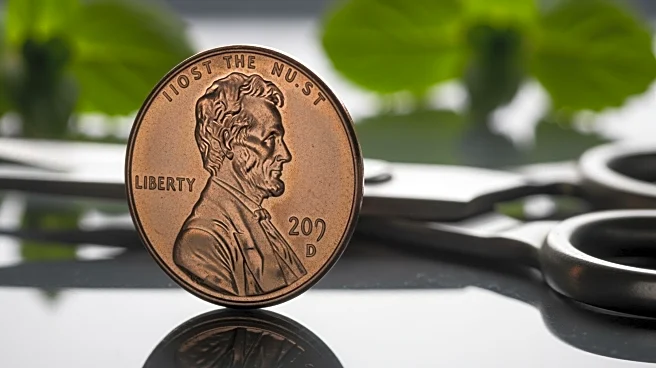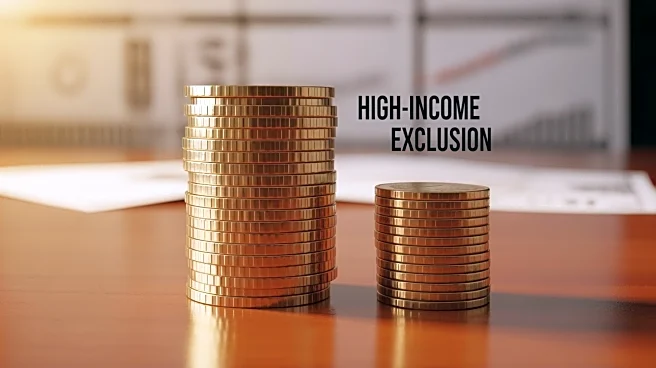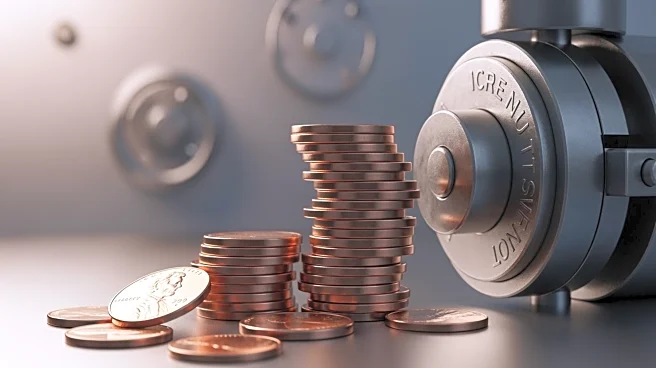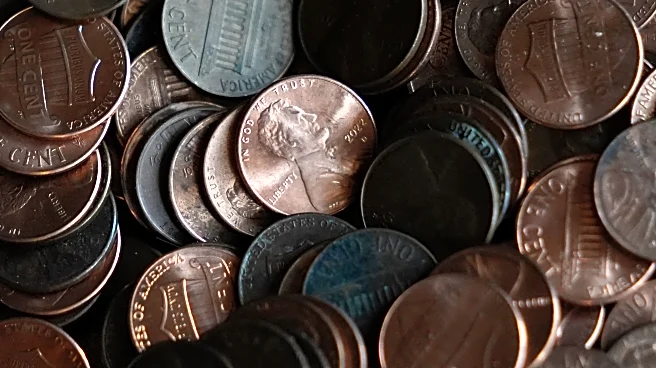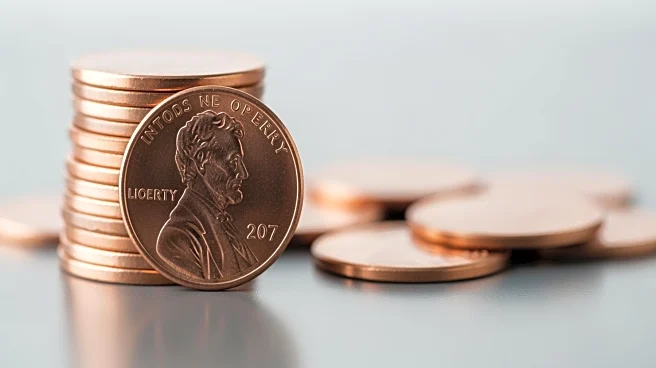What's Happening?
The U.S. Mint has ceased production of the penny, marking the end of an era for the 1-cent coin. This decision, ordered by President Donald Trump, aims to save taxpayers $56 million annually, as the cost of producing a penny had risen to nearly 4 cents.
The final pennies were struck at the Philadelphia Mint, where they have been produced since 1793. While pennies will remain legal tender, new ones will no longer be minted. The move reflects the declining relevance of the penny in modern transactions, as billions remain in circulation but are seldom used.
Why It's Important?
The discontinuation of the penny is a significant shift in U.S. currency policy, reflecting broader economic trends towards digital transactions and the decreasing use of physical coins. The decision is expected to reduce government expenditure on coin production, aligning with efforts to streamline federal costs. However, the abrupt phase-out has raised concerns among retailers and consumers accustomed to using pennies for exact change. The move also highlights the challenges of transitioning away from traditional currency in a society where cash transactions are still prevalent.
Beyond the Headlines
The end of penny production raises questions about the future of other low-denomination coins, such as the nickel, which also costs more to produce than its face value. The decision may prompt discussions on the broader implications of currency reform and the role of physical money in an increasingly digital economy. Additionally, the penny's historical significance as a cultural and economic symbol may lead to debates about preserving its legacy in American history.
